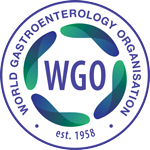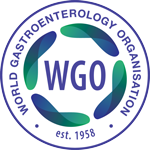HIV/HBV and HIV/HCV Co-infection in Sub-Saharan Africa: Transmission, Disease Outcomes, and Treatment Options
 |
Mark W. Sonderup, MD
Senior Consultant Hepatologist, Division of Hepatology
Department of Medicine, Faculty of Health Sciences
University of Cape Town
Cape Town, South Africa
|
| |
|
 |
C. Wendy Spearman, MD
Head: Division of Hepatology
Department of Medicine, Faculty of Health Sciences
University of Cape Town
Cape Town, South Africa
|
Introduction
Liver disease, particularly in the post antiretroviral era of HIV/AIDS, has emerged as a major cause of morbidity and mortality in Hepatitis B (HBV) or Hepatitis C (HCV) co-infected patients 1-4.
Sub-Saharan Africa, an epicenter of HIV infection, comprises 11% of the global population, but 70% of those infected with HIV. This translates to 24 million HIV infected individuals in a region that is simultaneously highly endemic for hepatitis B with an estimated >8% population prevalence or some 65 million people. The population prevalence data for hepatitis C is limited for most sub-Saharan African regions, however it is estimated that almost 30 million are infected. In contrast to developed countries, HBV co-infection outnumbers HCV co-infection in sub-Saharan Africa and probably reflects the low prevalence of injecting drug use (IDU). Rates of co-infection with hepatitis B of up to 36% are reported with the highest rates recorded in West and Southern sub-Saharan Africa 5.
Transmission and acquisition of HIV, Hepatitis B and Hepatitis C in sub-Saharan Africa
In sub-Saharan Africa, HIV and HBV transmission occurs mostly independent of each other with HBV infections usually occurring via horizontal transmission before the age of 5 and HIV heterosexually acquired during adulthood. However, HIV and hepatitis B may share routes of acquisition in neonates as a result of perinatal mother-to-child transmission. Maternal HIV infection increases mother-to-child transmission up to 2.5 fold as HIV promotes Hepatitis B replication and HIV/HBV co-infected mothers are more likely to be HBeAg positive and are thus potentially more infectious leading to increased perinatal transmission risk 6.
As opposed to IDU, the predominant mode of HCV transmission in sub-Saharan Africa is thought to be iatrogenic via inadequate screening of blood products or the reuse of syringes in health care facilities. Although HIV is thought to increase the risk of vertical HCV transmission 2.8 fold, studies suggest low rates of <5% vertical HCV transmission in sub-Saharan Africa 7, 8.
Hepatitis B and Hepatitis C genotype distribution
Genotypes A, D and E are the predominant hepatitis B genotypes in Africa. Genotype A accounts for up to 90% of HBV infections in southern, eastern and central Africa with genotype E occurring in West Africa. Genotype D occurs mainly in North Africa 9. Genotype A predisposes to chronicity with an elevated risk of hepatocellular carcinoma, but is also more responsive to alpha-interferon treatment. Genotype D is associated with reduced response rates to alpha-interferon and with acute infection, is associated with an increased risk of fulminant hepatitis.
Hepatitis C Genotypes 1, 2, 4 and 5 have endemic origins in Africa. Hepatitis C Genotypes 1 and 2 occur throughout Africa with Genotype 4 occurring in Egypt and parts of Central Africa. Genotype 5 occurs in Southern Africa and less commonly, in some parts of Central Africa.
Outcomes of HIV/HBV and HIV/ HCV co-infection
HIV promotes chronicity of infection, liver fibrosis and increases the risk of hepatocellular carcinoma in both chronic hepatitis B and C, particularly in the clinical setting of low CD4 counts 1-4.
HIV co-infection augments the risk of reactivation or sero-reversion of hepatitis B. In adult-acquired hepatitis B infection, concurrently acquired or existing HIV infection increases the risk of fulminant hepatitis. Occult hepatitis B is also more prevalent in HIV infected people and HCC occurs at a younger age and is more aggressive 10, 11.
HIV/HBV co-infected individuals have higher HBV DNA levels and liver-related mortality from chronic hepatitis B was increased in the pre- HAART era (RR of liver death 17.7 in co-infected compared to mono-infected individuals) 12.
Liver-related mortality is twice as high for chronic hepatitis B co-infected as for chronic hepatitis C co-infected individuals. A CD4 count of <200 cells/mm3 is associated with a 16.2 fold increase in risk of liver-related death compared to a CD4 count of >350 cells/mm3 13. Additionally, a potential association with adverse HIV outcomes in HBV co-infected individuals was demonstrated in the SMART study where HIV associated immune deficiency was enhanced by active HBV replication 14. Also, an HBeAg positive status has demonstrated an association with a slower virological response to HAART, compared to an HBeAg negative status 15. However, no long-term effect on clinical HIV outcome has been demonstrated in co-infection.
Management of HIV/Hepatitis B and HIV/Hepatitis C co-infection
Ideally, all HIV positive patients must be screened for HBsAg and hepatitis C antibody using existing HIV diagnostic infrastructures. However, there is limited infrastructure for molecular virology in sub-Saharan Africa and screening tests are costly. In order to correctly diagnose and manage HIV co-infections, there is a need for affordable, sensitive and specific point-of-care testing for HIV, HBV and HCV. Here, the need for WHO pre-qualified diagnostic tests to be approved and available is crucial.
Advocacy for the screening of mothers for HIV, hepatitis B and hepatitis C with initiation of appropriate anti-retroviral therapy, mother-to-child prevention therapy together with a birth dose of HBV vaccination, would significantly assist in decreasing the neonatal and infant transmission of HIV and HBV.
A meta-analysis of 550 HIV/HBV co-infected patients confirmed that Tenofovir suppresses HBV to undetectable levels in the majority of HBV/HIV co-infected patients with the proportion fully suppressed continuing to increase with time on treatment. Prior treatment with Lamivudine or Emtricitabine does not alter the efficacy of Tenofovir treatment 16. The fixed dose combination once daily therapy of Lamivudine or Emtricitabine, Tenofovir and Efavirenz is easy to administer and benefits adherence, an essential factor for viral suppression. The immune reconstitution syndrome, following the initiation of HAART, can lead to potentially life-threatening flares of hepatitis B, especially in individuals with low CD4 counts. Cirrhosis risk in HBV co-infected individuals virally suppressed on Tenofovir-based HAART is low 17.
Peg-Interferon and Ribavirin treatment can be considered in HIV/HCV patients with CD4 counts of >500 cells/mm3, however, given the need for intensive monitoring, risk of adverse effects, cost and lack of availability, it is not appropriate for many regions in sub-Saharan Africa. The new era of all oral Direct-Acting Antiviral (DAA) therapy for hepatitis C is the ideal for sub-Saharan Africa. Pan-genotypic combination AA therapy with high efficacy requiring a minimum of diagnostics and monitoring, would allow for simpler management of co-infected patients without the requisite need for complex diagnostics. The PHOTON-1 study has demonstrated efficacy for Sofosbuvir, a pan-genotypic NS5B polymerase inhibitor plus Ribavirin given for 12-24 weeks to HCV genotype 1-3 co-infected patients, all of whom were on stable HAART therapy. Sustained virological response (SVR) rates ranged from 76-94% 18. Improved efficacy approaching 100% SVR rates has been demonstrated with other pan-genotypic DAAs such as the NS5A inhibitor, Daclatasvir in combination with Sofosbuvir. The challenge will be the accessibility and affordability of these therapies.
The phenomenal success in upscaling HAART in sub-Saharan Africa has provided the model as to how this can be achieved and access to therapies for hepatitis C should follow similar principles.
Conclusion
Liver disease due to chronic hepatitis B and C is a significant cause of morbidity and mortality in HIV infected individuals. Early diagnosis of co-infections, initiation of HAART at CD4 counts ≥350 cells/mm3 and the effective treatment of hepatitis C are essential to prevent liver disease.
References
- Matthews GV, Manzini P, Hu Z et al. Impact of lamivudine on HIV and hepatitis B virus-related outcomes in HIV/hepatitis B virus individuals in a randomized clinical trial of antiretroviral therapy in southern Africa. AIDS 2011; 25:1727–1735.
- Stabinski L, Reynolds SJ, Ocama P et al. High prevalence of liver fibrosis associated with HIV infection: a study in rural Rakai, Uganda. Antivir Ther 2011; 16: 405–411.
- Ibrahim A, Shpaner A, Nieto J. Risk factors of accelerated liver fibrosis in HIV-HCV coinfection: a matched analysis. South Afr Gastroenterol Rev 2004; 2(3): 14–17.
- Mphahlele MJ. Impact of HIV coinfection on hepatitis B prevention and control: a view from Sub-Saharan Africa. South Afr J Epidemiol Infect 2008: 23(1): 14-18.
- Matthews PC, Gerettic AM, Gouldera PJR, Klenermana P. Epidemiology and impact of HIV coinfection with Hepatitis B and Hepatitis C viruses in Sub-Saharan Africa. J Clin Virol 2014; 61:20-33.
- Sangare L, Sombie R, Combassere AW et al. Antenatal transmission of hepatitis B virus in an area of HIV moderate prevalence, Burkina Faso. Bull Soc Pathol Exot 2009; 102: 226–229.
- Polis CB, Shah SN, Johnson KE and Gupta A. Impact of Maternal HIV Coinfection on the Vertical Transmission of Hepatitis C Virus: A Meta-analysis. Clin Infect Dis 2007; 44(8): 1123-1131.
- Njouom R, Pasquier C, Ayouba A et al. Low risk of mother-to-child transmission of hepatitis C virus in Yaounde, Cameroon: the ANRS 1262 study. Am J Trop Med Hyg 2005; 73: 460-466.
- Kramvis A and Kew M. Epidemiology of hepatitis B virus in Africa, its genotypes and clinical associations of genotypes. Hepatol Research 2007; 37: S9-S19.
- Mayaphi SH, Roussow TM,Masemola DP, Olorunju SA, Mphahlele MJ, Martin DJ. HBV/HIV coinfection: the dynamics of HBV in South African patients with AIDS. South Afr Med J 2012;102:157–162.
- Kew MC. Hepatocellular carcinoma in African Blacks: recent progress in etiology and pathogenesis. World J Hepatol 2010; 2: 65-73.
- Thio CL, Seaberg EC, Skolasky R, Jr. et al. HIV-1, hepatitis B virus, and risk of liver-related mortality in the Multicenter Cohort Study (MACS). Lancet 2002; 360 (9349):1921-1926.
- Falade-Nwulia O, Seaberg EC, Rinaldo CR et al. Comparative Risk of Liver-Related Mortality from Chronic Hepatitis B Versus Chronic Hepatitis C Virus Infection. Clinical Infectious Diseases 2012; 55(4):507-513.
- Dore GJ, Soriano V, Rockstroh J et al. Frequent hepatitis B virus (HBV) rebound among HIV- HBV coinfected patients following antiretroviral therapy interruption in the SMART study. AIDS 2010; 24(6):857–865.
- Idoko J, Seema Meloni, Muazu M et al, Impact of Hepatitis B Virus Infection on Human Immunodeficiency Virus Response to Antiretroviral Therapy in Nigeria. Clin Infect Dis 2009; 49:1268-1273.
- Price H, Dunn D, Pillay D et al. Suppression of HBV by Tenofovir in HBV/HIV Coinfected Patients: A Systematic Review and Meta- Analysis. PLoS One 2013; 8(7):e68152.
- Tuma P, Medrano J, Resino S et al. Incidence of liver cirrhosis in HIV-infected patients with chronic hepatitis B or C in the era of highly active antiretroviral therapy. Antiviral Therapy 2010;15: 881-886.
- Sulkowski MS, Naggie S, Lalezari J, et al. Sofosbuvir and ribavirin for hepatitis C in patients with HIV co-infection. JAMA 2014; 312:353-361.



